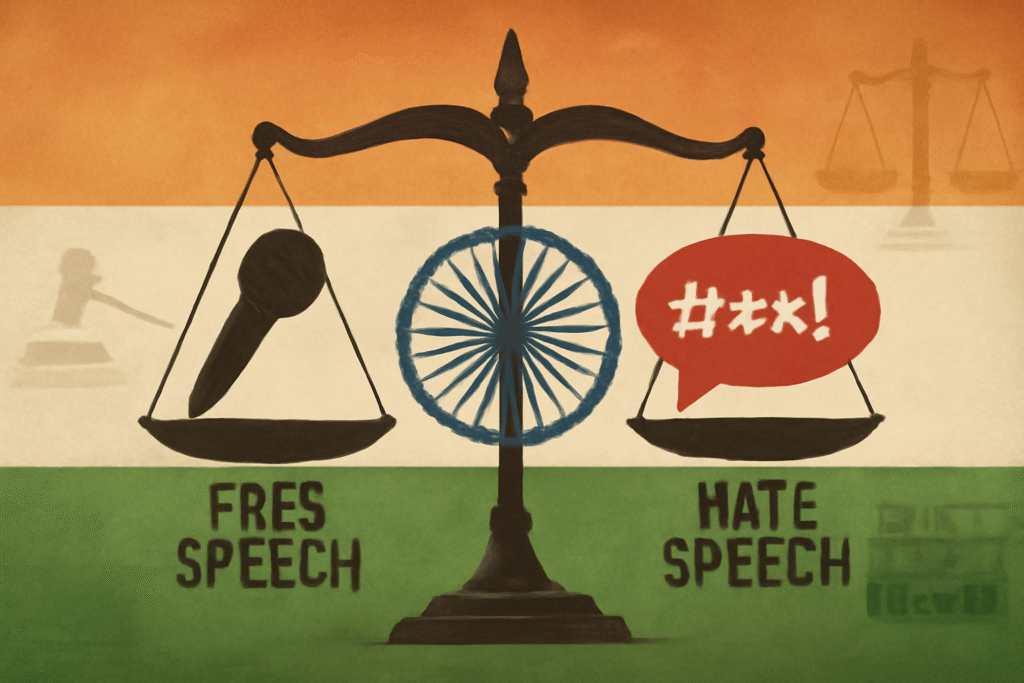Published On: 19th October, 2024
Authored By: Karthika R
His Highness Maharajas Government Law College Ernakulam
Introduction
Hulm Entertainment Pvt. Ltd. & Ors. vs Fantasy Sports Myfab11 Pvt. Ltd. & Ors. is a landmark judgement delivered by the Delhi High Court in which the court examined the scope of granting copyright to a GUI of an application. In this case, the High Court of Delhi cancelled an ex parte – temporary injunction granted in favour of the petitioners, restraining the defendant from making the MYFAB11 app available for download. The petitioners alleged that the said MYFAB11 app as owned by the defendants creates infringement of the copyrighted work of the plaintiff.
Details of the case
Case Name: Hulm Entertainment Pvt. Ltd. & Ors. vs Fantasy Sports Myfab11 Pvt. Ltd. & Ors.
Petition No : CS(COMM) 244/2022
Equivalent Citations:
Act Involved: Copyrights Act,1957
Important Provisions: Section 2, Section 13, Section 16 of the Copyrights Act, 1957
Court: Hon’ble High Court of Delhi
Bench: Jyothi Singh
Petitioner: Hulm Entertainment Pvt. Ltd
Respondent: Fantasy Sports Myfab11 Pvt. Ltd. & Ors
Judgement: 17 October 2023
Facts of the case
The plaintiffs in the instant case are the developers and operators of the fantasy sports mobile application called Exhange22, which had features of Fantasy Sports League and Stock Market. The plaintiffs argued that the idea for such an application was first conceived in the year 2010 and through years of development and hard work, it was released into the market in the year 2019. The plaintiff argues that their application was the first of its kind, for incorporating activities similar to stock market trading along with digital gaming. The plaintiff has registered the concept note related to the application as a literary work under the Copyrights Act, 1957. The plaintiff states that their in-house team of designers and developers has worked extensively on the design of the GUI (Graphic User Interface) of the App). The plaintiffs’ application brand also had a significant customer base. The defendants also own a similar application called MyFab11, which is a real money fantasy gaming business model. The plaintiffs allege that when the defendants released an updated version of their application into the market they incorporated the stock market feature in their updated version. The plaintiffs also alleged that not only did they copy the plaintiff’s concept but also its working, features and its buy/ sell interface. The judgment delivered by the court resolves two petitions, first, the petition filed by the petitioner for issuing an injunction order against the defendants restraining them from making available their application for download and the second is the petition filed by the defendants to quash the ex-parte interim injunction granted in favour of the petitioners.
Arguments of the petitioners
The plaintiffs’ fantasy sports game named Exchange22 is registered under the Copyrights Act, 1957 wherein the detailed concept note of the application which includes information like the object of the application, and the components therein gives a detailed explanation of every step that a user experiences on the application, is registered as a literary or artistic work. The plaintiffs seek the protection of their copyright in the GUI of the application which the defendants have copied. To substantiate this the plaintiffs have submitted the screenshots of different pages of the application The plaintiffs argue that GUI is an artistic work and capable of protection under the Act. The Government of India through the website of the Ministry of Information and Technology has stated that the “look and feel” of a GUI is protectable under the Act of 1957.
The petitioners contended that the “Unauthorized misappropriation of Plaintiffs’ data amounts to an act of unfair competition, which is the overarching concept flowing through the entire gamut of intellectual property rights”.
Arguments of the respondents.
The defendants averred that the plaintiffs made misrepresentation by claiming that they were the originators of the concept of combining fantasy sports leagues with elements of stock market trading. However, the defendants argued that even before the plaintiffs came up with such a concept, there were other similar applications that successfully integrated elements of the stock market with fantasy sports leagues. The defendants stated that the plaintiffs are unable to make out a solid case of copyright infringement as they are trying to establish infringement based on the functionality of the application which is not permissible under the law.
The defendants continued by calling out the averment of the plaintiff in relation to the infringement of the GUI of the application as wholly misconceived. The GUI of an application consists of three important elements; the computer program which enables the functionality and appearance of the GUI; the artistic/graphic elements of the visual display of the GUI; and the text/literary works contained in the GUI, which are visible to the user. The plaintiffs have failed to make out as to which of these elements they claim as an original work that needs copyright protection as a GUI cannot be granted copyright protection as a whole. The defendants after comparing the interfaces of the two applications placed reliance on the doctrine of merger and said that where an idea can only be expressed in a limited number of ways, there can be no copyright protection even in the expression of that idea.
Legal analysis
In this case, too, the court has upheld the importance of establishing the originality of the creative work in order to receive the protection of copyright. The court held that the originality of a work does not depend on whether the idea is novel or not but rather on the expression of the idea. For a literary or artistic work to be original it shall not be copied from any other authors. By relying on the judgement of Eastern Book Company V. DB Modak[1] the court held that for the purpose of attaining copyright based on originality what should be assessed not based on the level of novelty present in the idea but based on the amount of creativity of the author involved in the creation. Since the plaintiffs failed to explain whether any infringement occurred with respect to any of the three elements of the GUI, the court examined whether the plaintiff’s GUI could be protected as a whole. For this purpose, the court compared the interfaces of the application belonging to the plaintiff and the defendant and came to the conclusion that although some similarities exist between the two GUIs, the defendants have not made any substantial copying of the concept or features associated with the GUI of the plaintiff. Thereafter the court relied on the doctrine of merger and held that in fantasy sports online gaming applications’ regime, the game of cricket can only be played in a limited format and therefore, the Defendants cannot be held guilty for copyright infringement, except if the defendants explicitly copy anything from the plaintiffs application. The plaintiffs’ main argument rested on the claim that the plaintiff’s idea of combining elements of stock market trading with fantasy sports leagues was “first of its kind.” The defendants refuted this claim, claiming that other applications had already implemented such an integration before the plaintiff’s application was deployed. As a result, the court ruled that the defendants had not violated any copyright and revoked the ex-parte interim order that had been granted to the plaintiff.
Conclusion
When it comes to copyright protection there is only a fine line of balance between protecting the interest of the author who has employed his skill and labour and preventing unfair competition. In the instant case, the court decided against the plaintiffs owing to their inability to establish the originality of the content for they sought copyright protection thereby pointing to the importance of originality in granting copyright protection. Although the court itself pointed out that originality is not associated with the novelty of an idea rather than the expression of an idea, the court rejected the claim of the petitioner mainly on the ground that the concept of integrating elements of stock market trading with fantasy league sports is not “first of its kind” as alleged by the plaintiffs which seemed contradictory, especially when the court failed to examine the concept note which contained the expression of an idea in association with the application. If only the scope of concept notes in granting copyright protection was discussed in a more detailed way, it could have been a guide at the time of granting protection to intellectual property rights associated with software and application developments.
The judgement also failed to focus on the practical aspects of granting copyright to GUIs which could have thrown light on a grey area pertaining to copyrights associated with software or application development. The court once again placed its importance on interpreting the process of determining the originality of the work, an interpretation which echoed redundancy, thereby losing the focus on a potential area of dispute in technology transactions.
[1] (2008) 1 SCC 1,



